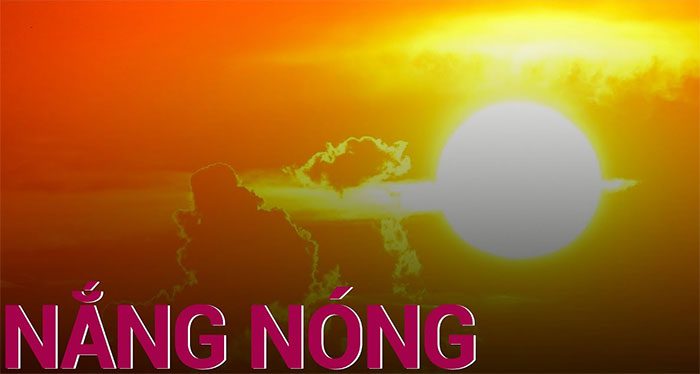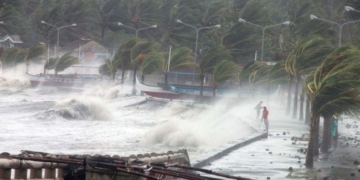From March 22 to 24, the North Central provinces of Vietnam will experience widespread heat, with the northern region facing localized high temperatures. This summer is anticipated to arrive earlier and be more severe compared to last year.
The National Center for Hydro-Meteorological Forecasting has reported that due to the influence of a hot low-pressure system from the West combined with the Föhn effect, heatwaves are likely to occur in the western mountainous areas of provinces from Thanh Hoa to Thua Thien – Hue starting March 21. The highest temperatures are expected to range from 34 to 36 degrees Celsius. From March 22 to 24, widespread heat will be present from Thanh Hoa to Thua Thien – Hue, with maximum temperatures forecasted to reach 35 to 37 degrees Celsius, with some areas exceeding 37 degrees.
In Northern Vietnam, starting today (March 20), sunny weather will increase temperatures gradually. From March 22 to 24, the northern region will be sunny, with localized heat in some areas with expected maximum temperatures between 34 and 35 degrees Celsius. The capital city of Hanoi will also experience sunny and hot weather during this period, with maximum temperatures reaching 35 degrees.

From March 22-24, the North and Central regions will face heat.
Specifically, from Da Nang to Phu Yen, there is a possibility of localized heat from March 22 to 24, with maximum temperatures typically between 34 and 36 degrees Celsius, with some areas exceeding 36 degrees. Meanwhile, the prolonged heatwave in the Southeast region shows no signs of cooling down. In the coming days, maximum temperatures in this area are expected to remain between 35 and 36 degrees Celsius, with some areas exceeding 36 degrees.
The National Center for Hydro-Meteorological Forecasting warns that the combination of heat and low humidity in the air, along with southwest winds causing the Föhn effect, increases the risk of fires and explosions, especially forest fires in the North Central provinces. The heat may cause dehydration, exhaustion, and heatstroke in individuals exposed to high temperatures for prolonged periods.
Forecasts indicate that the UV index in Northern Vietnam over the next few days will reach levels harmful to human health. In the Central and Southern regions, the maximum UV index will be at very high levels, even reaching dangerous levels (10-11). Individuals participating in outdoor activities should apply sunscreen, wear protective clothing, wide-brimmed hats, sunglasses, drink plenty of water, and limit direct sun exposure.
The National Center for Hydro-Meteorological Forecasting predicts that this summer will arrive earlier and be harsher compared to 2022. From April to May, heat intensity is expected to increase and expand in the Northern and Central regions while continuing to persist in the Southeast provinces.
The average temperature across most of the country in April is expected to be 0.5 to 1 degree Celsius higher than the long-term average. In May and June, the average temperature is trending to be 0.5 degrees higher.
Forecasts for July and August indicate that heat will continue primarily in the Northern and Central regions, with heat intensity likely to be more severe compared to the same period in 2022. From July to September, temperatures nationwide are expected to be 0.5 to 1 degree higher than the long-term average for this period. Experts warn that in the context of climate change, extreme heatwaves may occur this summer.


















































